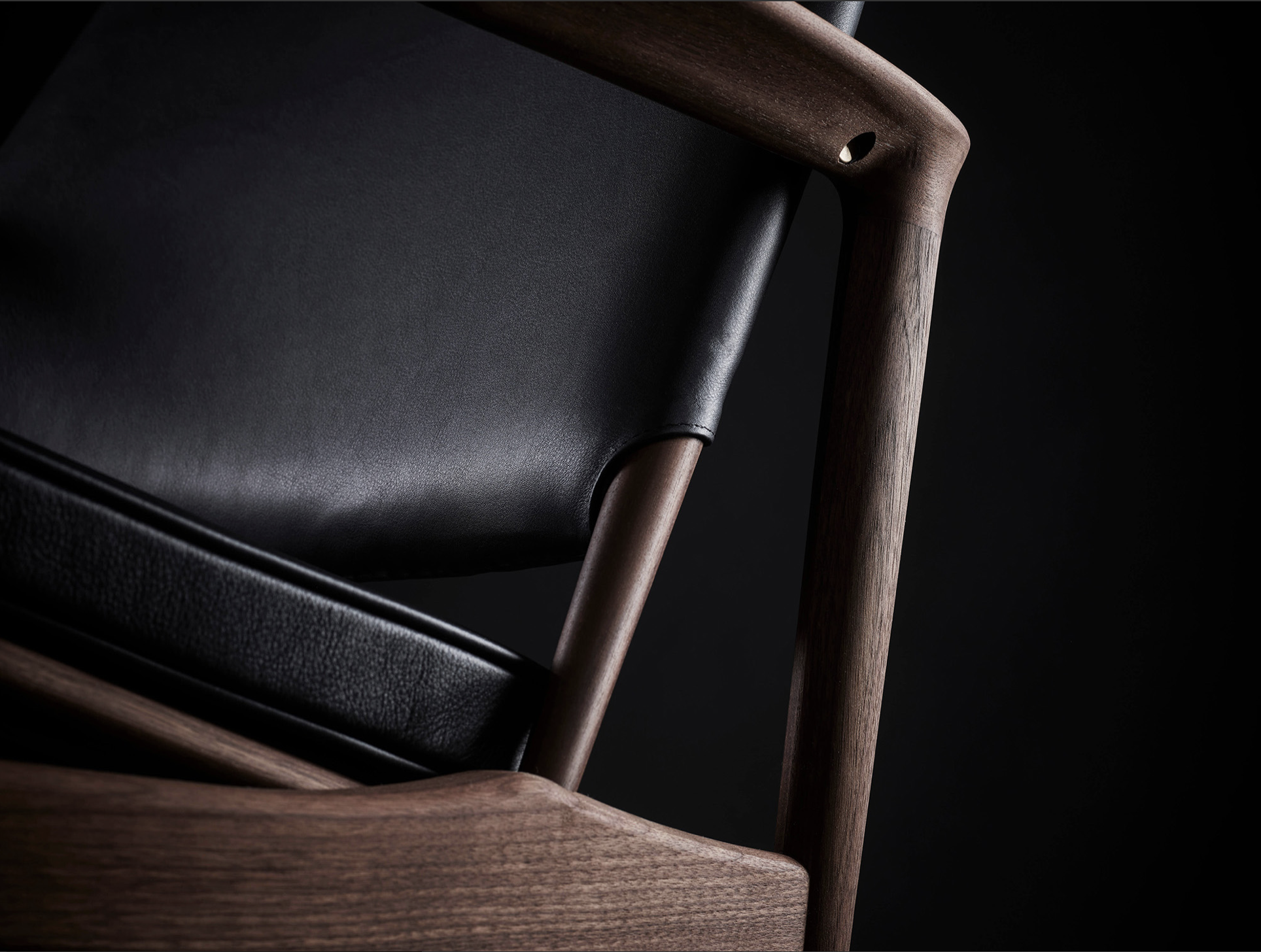
Eikund – 15th march 2021
Circular economy for human wellbeing
Circular economy is at the heart of what we do at Eikund. We increase the life-cycle of materials and products, minimise our material throughput and give something back to regenerate natural systems.
Thinking about sustainability and the future of production, many have started talking about circular economy. But what does it really mean?
A circular economy is best understood as an antidote to the linear economy, which is what we know as ‘take-make-waste’. The problem with our current economic model of production is that we’re taking and wasting too much of nature’s resources.
– At Eikund we’re working to reduce the material throughput, and increase the life-cycle of materials, by designing products that last’, says Jørgen Tengesdal, co-founder of Eikund.
Extended life-cycle
Part of the circular economy is extending the life-cycle of products, so that our material consumption is reduced. When Eikund makes a chair, it’s made to last for generations.
– Making products that last is perhaps the most important thing we can do for the circular economy, says Jørgen.
Today, many products are not made to last beyond their guarantee. Once they break, it’s often difficult or even impossible to repair the product, or to unassemble the materials for recycling.
An important part of the circular strategy of Eikund is to make things that can be maintained and repaired.
– We make everything out of hardwood, so our products can always be sanded down and oiled again to renew the look of the wood, says Morten Hippe, the other co-founder of Eikund.

An important part of the circular strategy of Eikund is to make things that can be maintained and repaired.
Nature’s bounty
At a time when progress does not always promote human well-being, Eikund is working to show that sustainability and human health and welfare are often one and the same.
It wasn’t that long ago that harmful materials such as asbestos or lead were commonly used in construction. Luckily, those days are over.
– We now know that artificial materials can be dangerous for our health, says Hippe.
Natural materials are always the best and safest option. Not only because it minimises the use of chemicals; research actually shows that natural materials have beneficial health effects.
Specifically, wood has been found to reduce stress levels, as well as having other positive effects on mental health.
– These findings inspire us at Eikund to continue using natural materials uncompromisingly, says Hippe.
Treatment and care
All materials are treated with supplementary substances. To bond separate wooden parts together Eikund uses a glue certified by the EU Ecolabel. Wooden surfaces are treated with finishes such as soap, oil and lacquer.
– We are in a continuous process of removing substances that damage the environment, says Jørgen.
Part of the efforts to minimise the environmental impact involves a close dialog with suppliers to find better options for the future.
Sustainable packaging
Another important part of the environmental impact of production is the choice of packaging and transportation. Eikund uses corrugated cardboard to ensure proper protection using the minimum amount of material.
– The packaging we use at Eikund is 100% recyclable and biodegradable, and we make sure it comes from sustainably managed forests, says Hippe.
Most of the corrugated cardboard in Scandinavia is collected and used again and again as a raw material in new production.
Green transport
Eikund is also conscious of the choice of transport, as transportation is one of the main drivers of climate emissions. Rail transport is preferred, and used wherever possible. Overseas transportation is handled predominantly by shipping, and only in exceptional circumstances by air freight.
– When it comes to transport, we’re doing our best to minimise the climate impact, but we also have to acknowledge the role of politics in investing in carbon-neutral infrastructure, says Tengesdal.
Circular strategies
Eikund supports the move to a circular economy, by building products that last, finding innovative ways to design our products in order to cut out waste and pollution, and regenerating natural systems.
This way, each piece of furniture and material can bring more joy!
– Keeping materials and products in use for a longer period of time is the most important contribution we can make to reduce our environmental footprint, says Tengesdal.

Part of the efforts to minimise the environmental impact involves a close dialog with suppliers to find better options for the future.
Sustainable packaging
Another important part of the environmental impact of production is the choice of packaging and transportation. Eikund uses corrugated cardboard to ensure proper protection using the minimum amount of material.
– The packaging we use at Eikund is 100% recyclable and biodegradable, and we make sure it comes from sustainably managed forests, says Hippe.
Most of the corrugated cardboard in Scandinavia is collected and used again and again as a raw material in new production.
Green transport
Eikund is also conscious of the choice of transport, as transportation is one of the main drivers of climate emissions. Rail transport is preferred, and used wherever possible. Overseas transportation is handled predominantly by shipping, and only in exceptional circumstances by air freight.
– When it comes to transport, we’re doing our best to minimise the climate impact, but we also have to acknowledge the role of politics in investing in carbon-neutral infrastructure, says Tengesdal.
Circular strategies
Eikund supports the move to a circular economy, by building products that last, finding innovative ways to design our products in order to cut out waste and pollution, and regenerating natural systems.
This way, each piece of furniture and material can bring more joy!
– Keeping materials and products in use for a longer period of time is the most important contribution we can make to reduce our environmental footprint, says Tengesdal.

